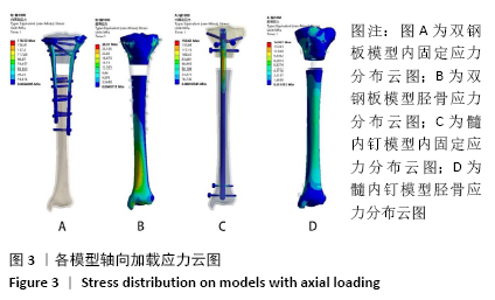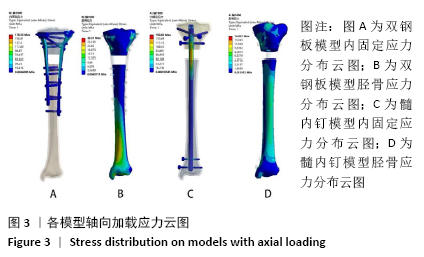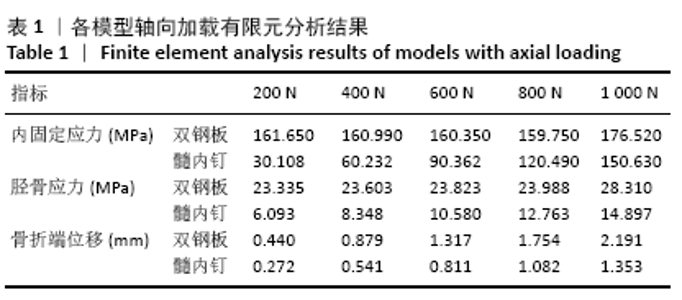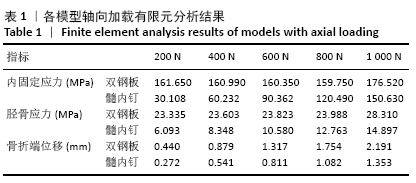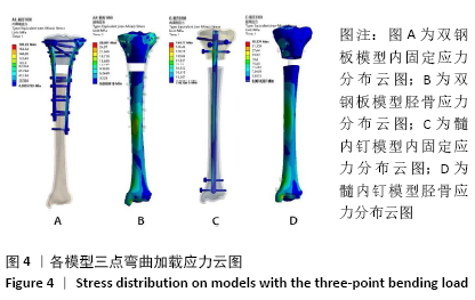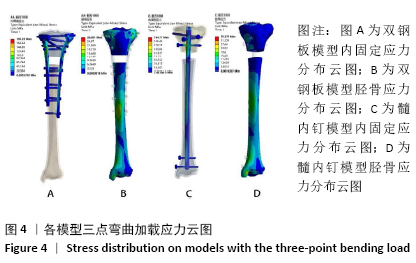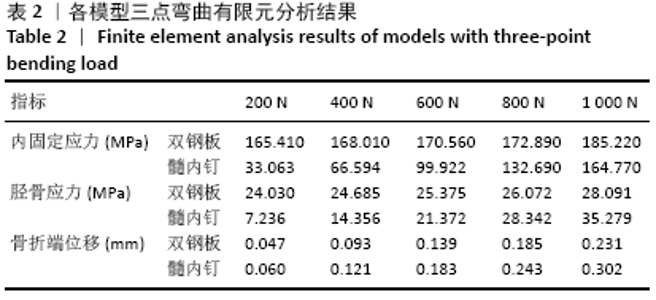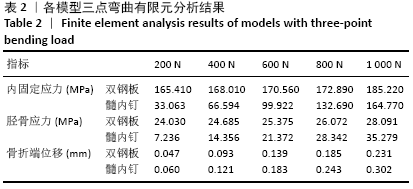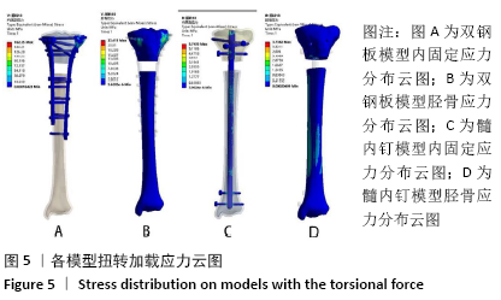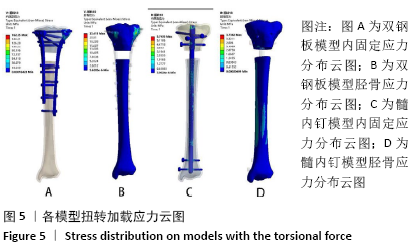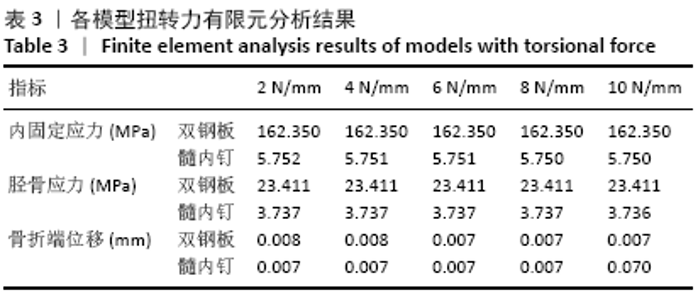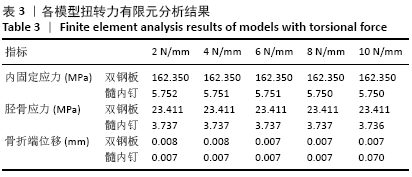[1] HIESTERMAN TG, SHAFIQ BX, COLE PA. Intramedullary nailing of extra-articular proximal tibia fractures. J Am Acade Orthop Surg. 2011;19(11): 690-700.
[2] SEYHAN M, UNAY K, SENER N. Intramedullary nailing versus percutaneous locked plating of distal extra-articular tibial fractures: a retrospective study. Eur J Orthop Surg Traumatol Orthop Traumatol. 2013;23(5):595-601.
[3] 张庆杰,王永清,周星衡,等. 锁定多向带锁髓内钉与锁定接骨板固定胫骨平台骨折的有限元分析[J]. 中华创伤骨科杂志,2015,17(3):251-256.
[4] KUHN S, HANSEN M, ROMMENS PM. Extending the indications of intramedullary nailing with the Expert Tibial Nail®. Acta Chir Orthop Traumatol Cech. 2008;75(2):77-87.
[5] 周栋,农鲁明,徐南伟. 解剖型胫骨髓内钉治疗胫骨远端骨折的临床研究[J].中华创伤杂志,2011,27(1):41-43.
[6] KANDEMIR U, HERFAT S, HERZOG M, et al. Fatigue failure in extra-articular proximal tibia fractures: locking intramedullary nail versus double locking plates-a biomechanical study. J Orthop Trauma. 2017;31(2):e49-e54.
[7] WONG C, MIKKELSEN P, HANSEN LB, et al. Finite element analysis of tibial fractures. Dan Med Bull. 2010;57(5):A4148.
[8] ATMACA H, ÖZKAN A, MUTLU I, et al. The effect of proximal tibial corrective osteotomy on menisci, tibia and tarsal bones: a finite element model study of tibia vara. Int J Med Robot. 2014;10(1):93-97.
[9] SITTHISERIPRATIP K, OOSTERWYCK HV, SLOTEN JV, et al. Finite element study of trochanteric gamma nail for trochanteric fracture. Med Eng Phys. 2003;25(2):99-106.
[10] SAWATARI T, TSUMURA H, IESAKA K, et al. Three-dimensional finite element analysis of unicompartmental knee arthroplasty––the influence of tibial component inclination. J Orthop Res. 2005;23(3):549-554.
[11] SOWMIANARAYANAN S, CHANDRASEKARAN A, KUMAR RK. Finite element analysis of a subtrochanteric fractured femur with dynamic hip screw, dynamic condylar screw, and proximal femur nail implants – a comparative study. Proc Inst Mech Eng H . 2008;222(1):117-127.
[12] GALLOWAY F, KAHNT M, RAMM H, et al. A Large scale finite element study of a cementless ossointegrated tibial tray. J Biomech. 2013;46(11): 1900-1906.
[13] 莫诒向,邓羽平,黄文华, 等.腓骨高位截骨术对胫骨平台的生物力学分析[J].中国医学物理学杂志,2020,37(5):644-648.
[14] MEENA RC, MEENA UK, GUPTA GL, et al. Intramedullary nailing versus proximal plating in the management of closed extra-articular proximal tibial fracture: a randomized controlled trial. J Orthop Traumatol. 2015;16(3): 203-208.
[15] BONO CM, LEVINE RG, RAO JP, et al. Nonarticular proximal tibia fractures: treatment options and decision making. J Am Acad Orthop Surg. 2001; 9(3):176-186.
[16] 黄涛,马凯.多功能带锁髓内钉与双钢板治疗胫骨近端关节外骨折的临床效果比较[J]. 创伤外科杂志,2017,19(2):126-129.
[17] HÖGEL F, HOFFMANN S, PANZER S, et al. Biomechanical comparison of intramedullar versus extramedullar stabilization of intra-articular tibial plateau fractures. Arch Orthop Trauma Surg. 2013;133(1):59-64.
[18] LEE SM, OH CW, OH JK, et al. Biomechanical analysis of operative methods in the treatment of extra-articular fracture of the proximal tibia. Clin Orthop Surg. 2014;6(3):312-317
[19] HANSEN M, MEHLER D, HESSMANN MH, et al. Intramedullary stabilization of extraarticular proximal tibial fractures: a biomechanical comparison of intramedullary and extramedullary implants including a new proximal tibia nail (PTN). J Orthop Trauma. 2007;21(10):701-709.
[20] VAJGEL A, CAMARGO IB, WILLMERSDORF RB, et al. Comparative finite element analysis of the biomechanical stability of 2.0 fixation plates in atrophic mandibular fractures. J Oral Maxillofac Surg. 2013;71(2):335-342.
[21] CARRERA I , GELBER PE , CHARY G , et al. Fixation of a split fracture of the lateral tibial plateau with a locking screw plate instead of cannulated screws would allow early weight bearing: a computational exploration. Int Orthop. 2016;40(10):2163-2169.
[22] 刘立峰,蔡锦方,梁进.跟骨骨折内固定方法的有限元模拟比较[J].中国矫形外科杂志, 2003, 11(8):557-558.
[23] PARKER PJ, TEPPER KB , BRUMBACK RJ, et al. Biomechanical comparison of fixation of type-I fractures of the lateral tibial plateau: is the antiglide screw effective? Bone Joint J. 1999;81-B(3):478-480.
[24] 杨宗酉,程晓东,朱炼,等. 内侧和外侧锁定钢板固定Schatzker Ⅵ型胫骨平台骨折的有限元分析[J]. 中华创伤骨科杂志, 2018, 20(2):157-161.
[25] KENWRIGHT J, GOODSHIP AE. Controlled mechanical stimulation in the treatment of tibial fractures. Clin Orthop Relat Res. 1989;(241): 36-47.
[26] 冯卫,刘建国,裴福兴.带锁髓内钉在胫骨近端骨折的生物力学研 究及临床应用[J].中国生物医学工程学报,2005,24(6):728-732.
|
